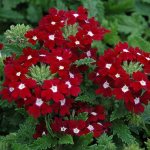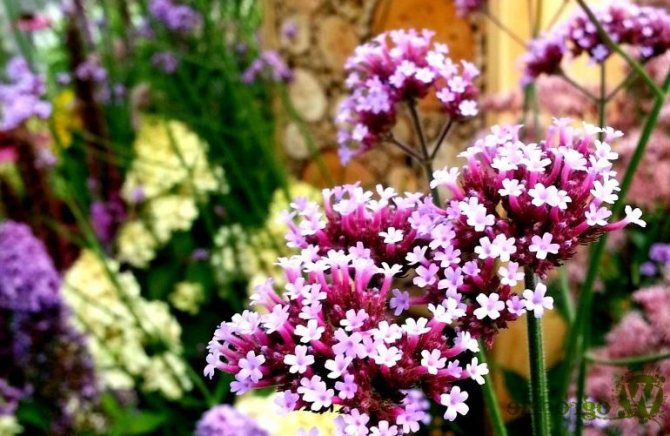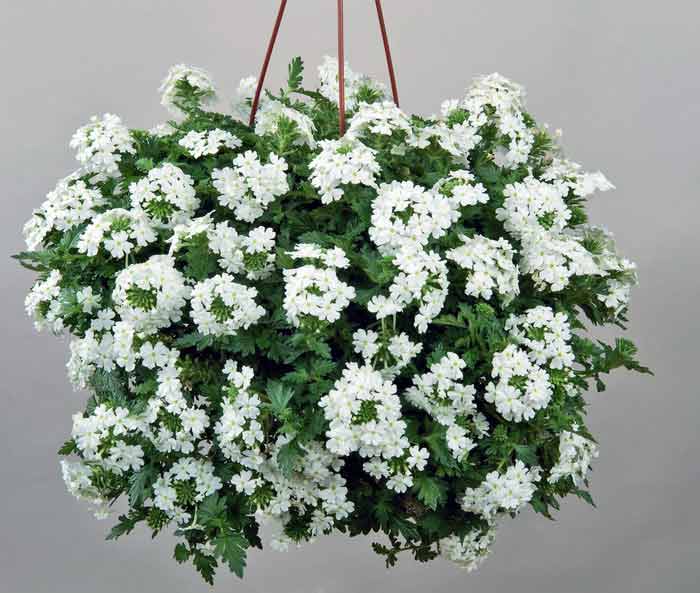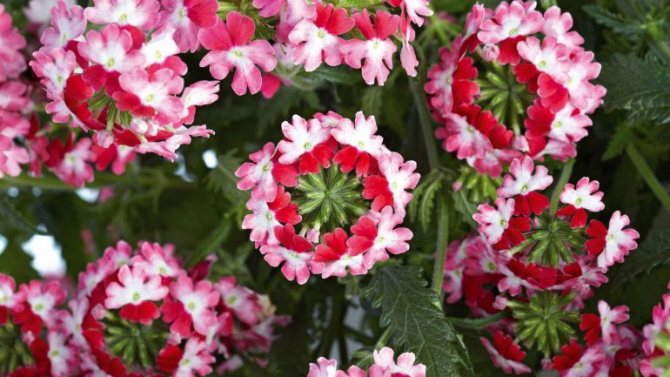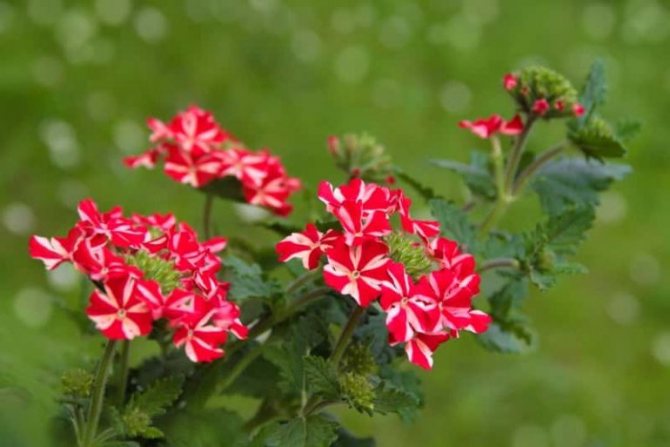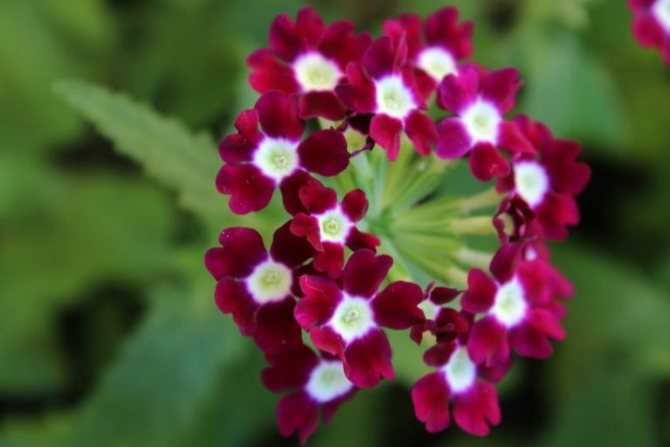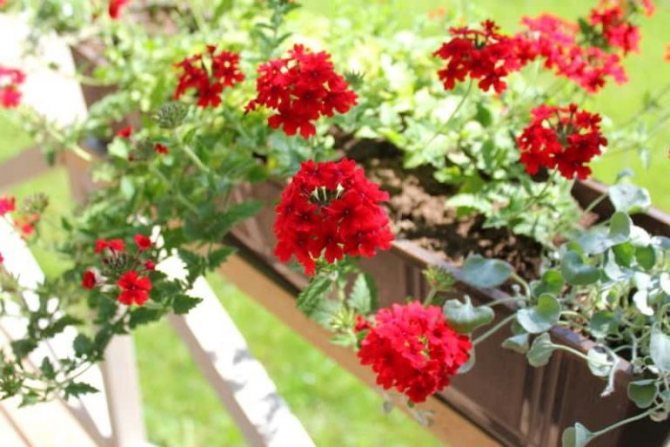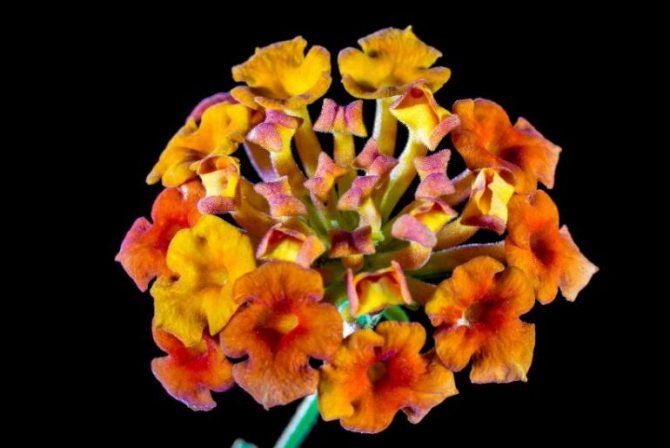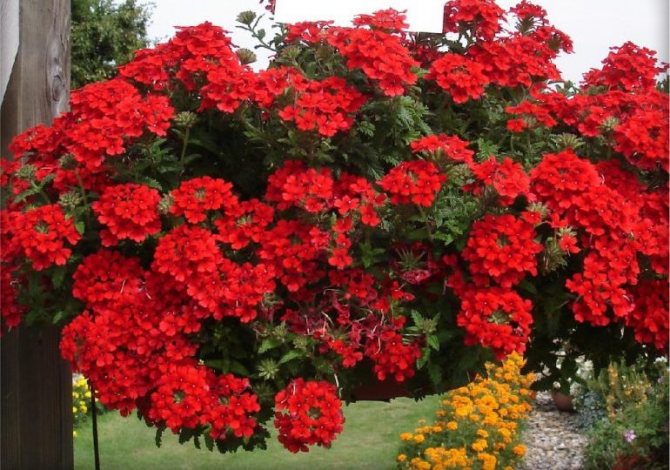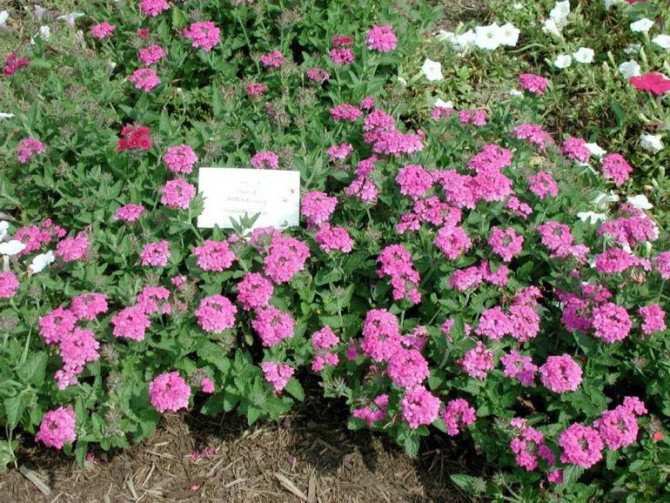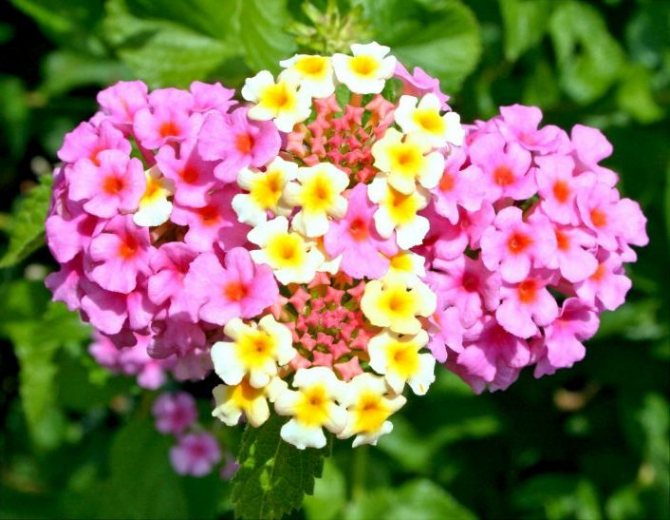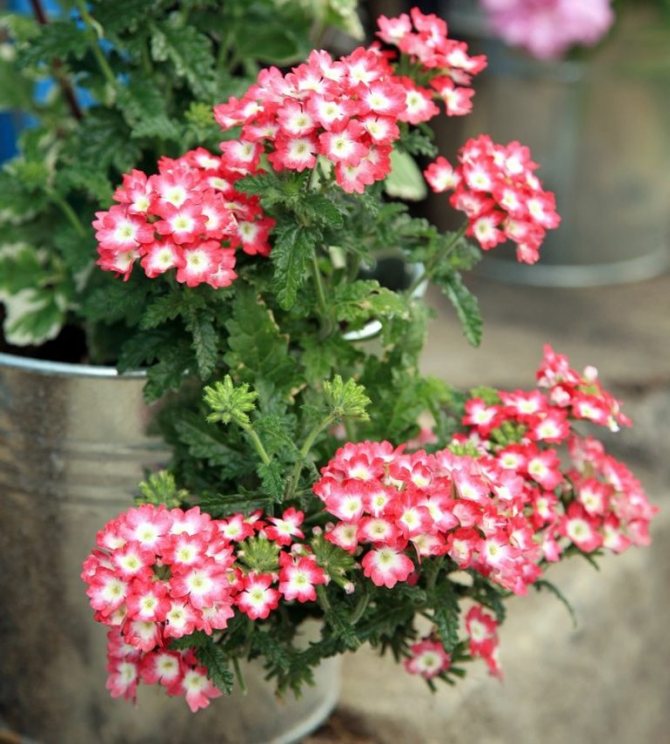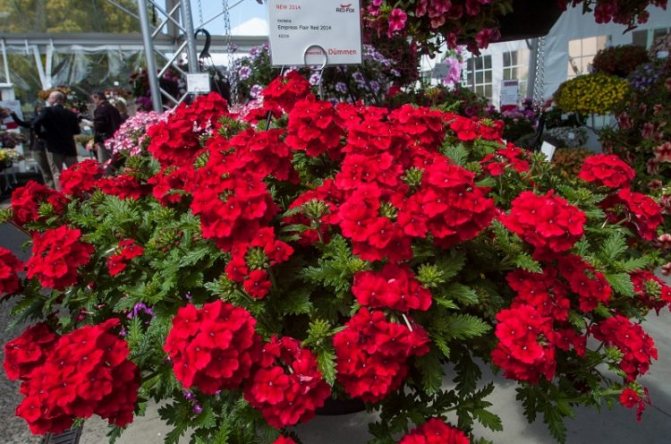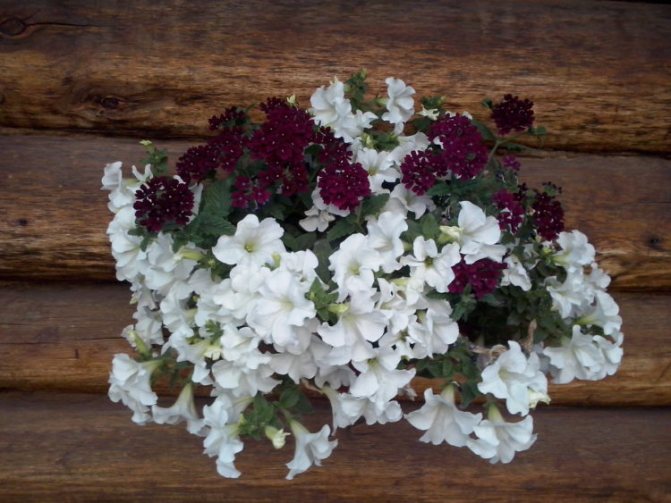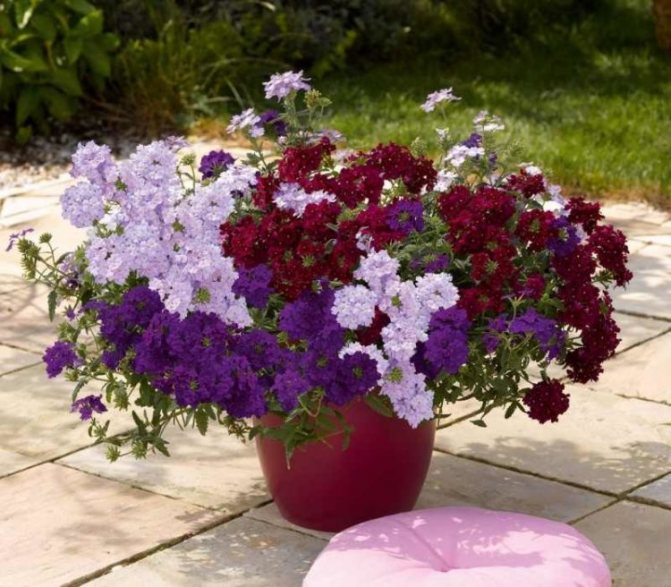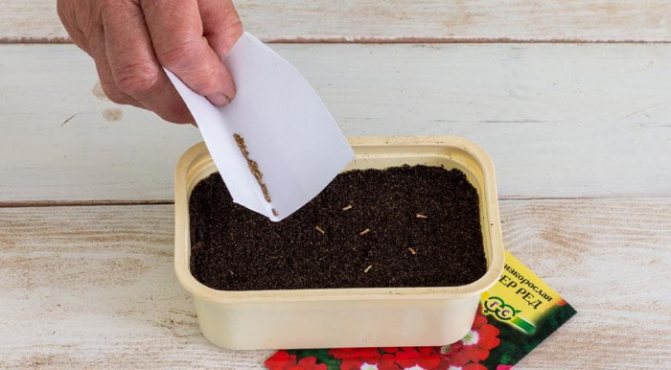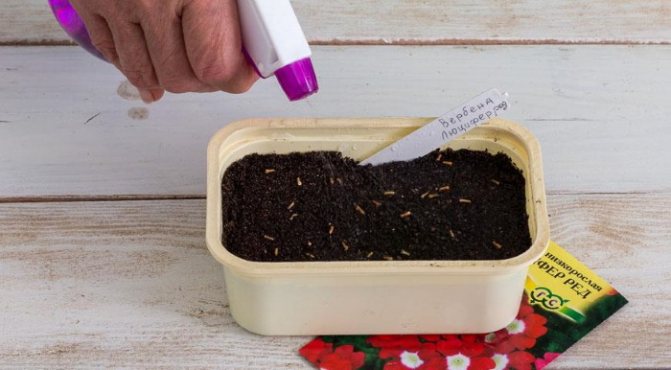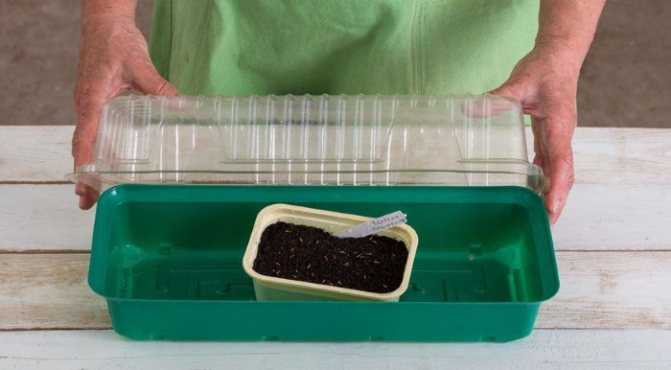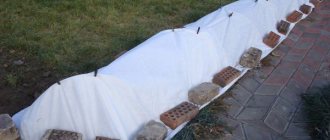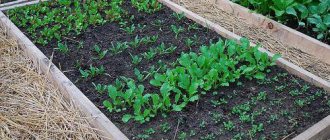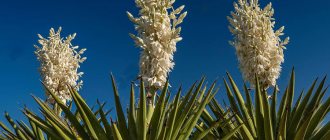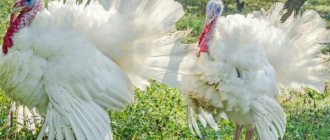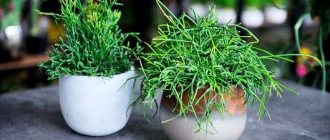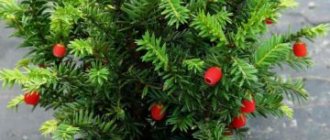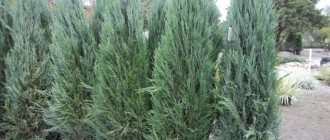Growing verbena is not such an easy process as it seems at first glance. You need to know which varieties should be grown in a particular region, what are the basic requirements for growing seedlings and then planting them in open ground.
In order for this plant to please with its flowering until the very frost, you should know what are the basic rules for caring for a flower, which flowers are compatible in a flower garden next to verbena, how to propagate it.
Many growers complain that this flower does not grow or bloom well for them. With what it can be connected? And what else should you know about those who want to plant vervain in their garden? These and many other questions will be answered in this article.
Verbena ampelous: planting and care
Growing decorative flowers and shrubs, gardeners are primarily interested in their description, and only then - in the growing conditions. Undoubtedly, both criteria are important, but it so happened that the appearance of plants is important for decorating a site.
That is why, speaking about ampelous verbena, we will first get acquainted with the appearance of its varietal variations and only then we will carefully understand the nuances of planting and further care of the flower.
If the more famous erect verbena is unable to cover large territories of the personal plot, then its ampelous version rapidly diverges in breadth, occupying an area of up to 0.5 m². The leaf plates of the plant are rather mediocre: very dense and hairy. The flowers contain five petals, complemented by thorns. They can be characterized by a wide variety of color variations, from deep red or pink to blue and purple.
As for the sepals of the ampelous verbena, they do not differ in large size and do not grow more than 2 cm. A light brown or green nut is presented as a fruit, splitting into 4 parts. This plant is an excellent food for butterflies and caterpillars, which is what many see as its peculiarity.
Despite the fact that it is a perennial plant, many plant ampel verbena as an annual in hanging pots. The stems often fall 60 cm down from them, perfectly fitting into any interior on the street or on the veranda.
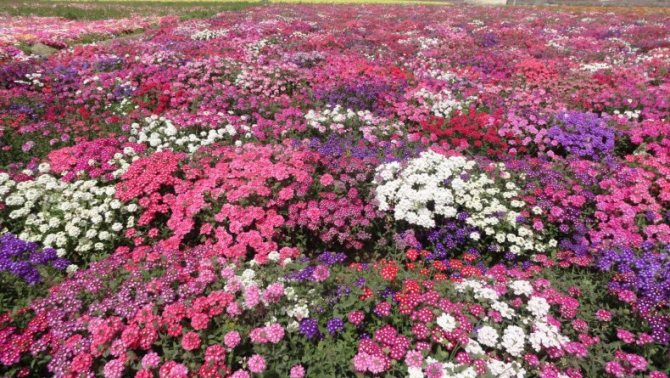
Today, many varietal variations of ampelous verbena have been bred, and plant breeding continues today. Almost all of them have identical requirements for their growing conditions, so caring for them at home will not be very difficult. Let's take a look at the most common varieties of this famous flower.
"Imagination"
The plant is characterized by relatively large flowers with purple and blue hues, thanks to which fluffy bushes are formed, reaching half a meter in height and width. This highly decorative variety is distinguished by rapid vegetative growth, but so that the covering foliage always has a rich color, and the plant pleases you with its abundant flowering, it is important to regularly apply complex mineral fertilizers to the soil. In addition, during the period of active leaf growth, watering should be intensified, adding nitrogen mixtures to this process.To achieve the formation of a large number of buds, potassium, phosphorus and manganese can be added to the soil.
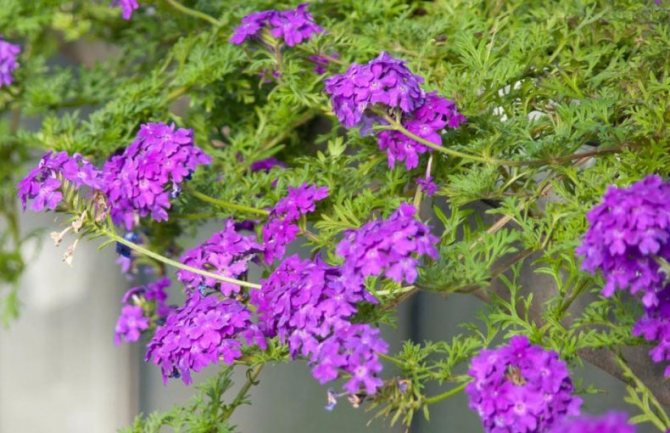

"Tiara Red Impr"
A characteristic feature of this variety is bright scarlet and quite abundant inflorescences. This festive option looks great in hanging baskets, planters and balcony boxes. In general, the plant copes well with drought and can withstand temperature drops down to -3 ° C. It is easy to grow, and it does not need special care, but, growing rapidly, ampel verbena "Tiara Red Impr" forms lush "caps" reaching in diameter 50 cm. Flowering is long, so you can admire a beautiful flower for a long time.
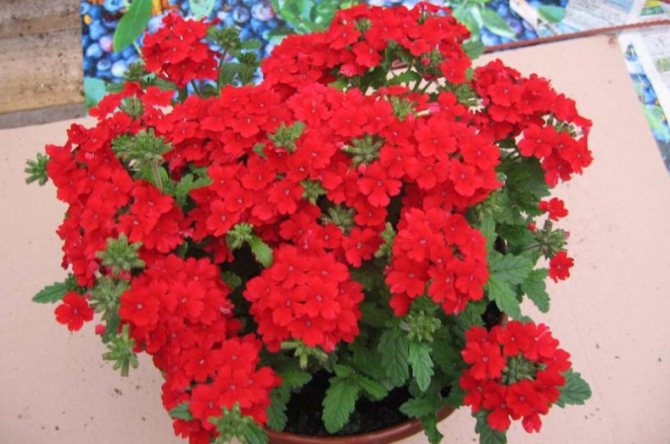

Empress Peach
This variety is distinguished by creamy delicate inflorescences located on shoots 25-50 cm long. A characteristic feature of this particular verbena is the need for medium-intensity watering. Subject to the rule, it will be possible to admire the flowering from June to October.
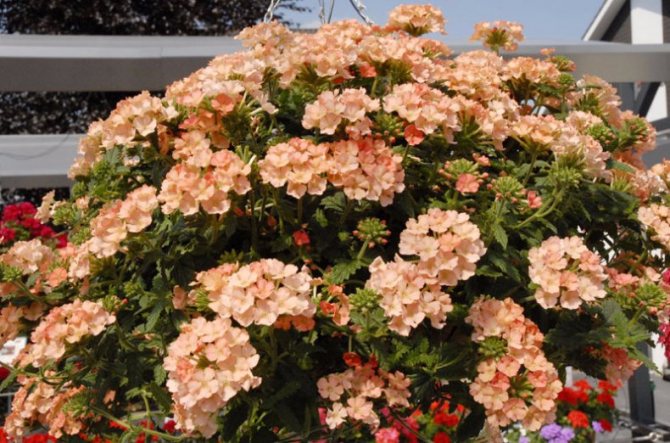

Estrella Voodoo Star
Another very remarkable variety. It is remembered for its large red-white inflorescences and a plant height of up to 30 cm. The tips of the shoots are directed upwards. Verbena bloom can be observed from June until frost. Among other varieties, "Estrella Voodoo Star" stands out for its drought resistance.
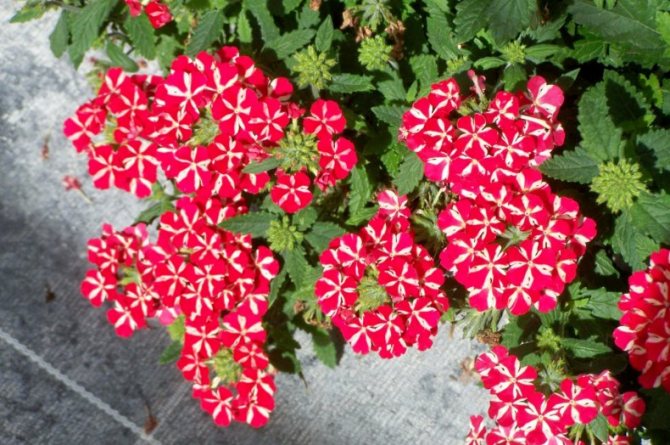

The ampelous verbena of this variety is characterized by spectacular blue flowers with a white eye, which delight flower growers from June to September. This is a fairly compact plant, reaching a height of 25 cm. Planting and further care of the variety are no different from similar actions when growing other varieties.
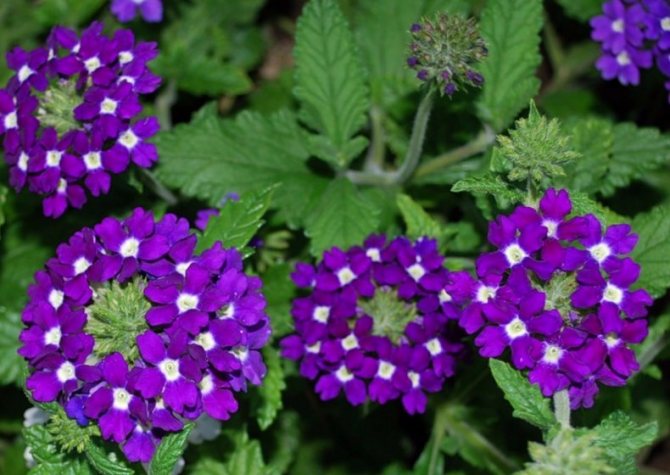

"Lanai Candy Cane"
The variety was bred in 2012 as a representative of the early flowering ampelous series. The plant bushes well and attracts the eyes of passers-by with large unusual flowers - a crimson-red star stands out against a white background. Shoots reach a length of 30-45 cm. A characteristic feature of this particular variety is its good resistance to powdery mildew and a light raspberry aroma from the flowers blooming in May-October.


With its long, strong shoots, this cultivar almost immediately became a top seller for pot cultivation. Unusual appearance and short stature allow it to fit well into any interior - no matter whether it is external or internal.
Sowing and planting in open ground
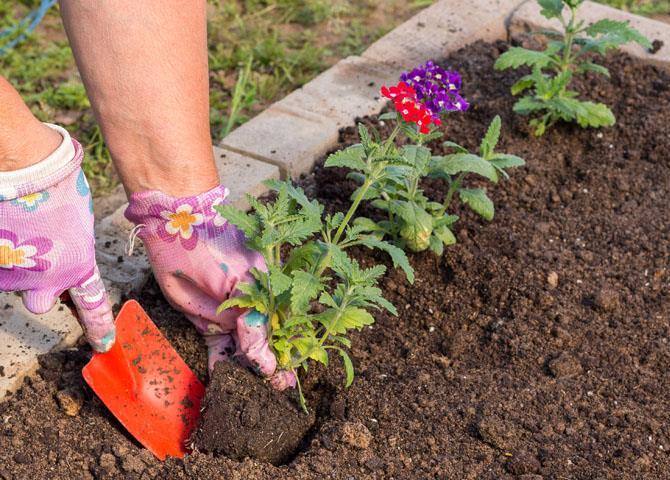

Verbena is a fairly thermophilic plant, and its seeds require at least 11 - 12 hours of daylight during germination, so it is better to plant them in open ground in the southern regions of our country. And in other areas it is better to plant ready-made seedlings or cuttings of this flower in flower beds.
First, you need to decide on the place where this beautiful flowering plant will be planted. These flowers can be planted anywhere in the garden, for example, where early plants (tulips, daffodils and other flowers) have bloomed. But more beautiful verbena bushes grow in those areas where there is a lot of sunlight. Verbena foliage and flowers are not afraid of direct sunlight, do not fade or wither in the sun.
Since verbena has fairly compact roots, it can be planted in any hanging pots and flowerpots.
This plant grows well in fertile loamy soils. But it can grow on other types of soil, if the following conditions are met:
- the soil has high water permeability;
- the soil is loose.
And if there are heavy types of soil on the site, then it is enough to add river sand to them, and the verbena will take root perfectly, and will delight the eye with its bright inflorescences.
For better drainage of water, knowledgeable flower growers arrange drainage in those places where this plant will grow. The following materials can be used as drainage materials:
- broken brick;
- fragments of cobblestones;
- expanded clay;
- crushed stone.
The drainage layer perfectly conducts water, protecting the verbena roots from excess moisture. Properly arranged drainage is a guarantee that there will be no stagnation of moisture in these areas.
Planting seeds in open ground should be carried out in specially made grooves. The distance between such rows should be at least 0.7 m. Caring for emerging seedlings in the open field is no different from caring for seedlings grown at home.
Verbena seedlings are planted in open ground in pre-prepared holes. The distance between the holes in the rows is at least 0.5 m, and between the rows - at least 0.7 m. A pre-prepared nutrient mixture consisting of humus, peat and river sand can be added to the holes. If the soil is sufficiently depleted, then a complex mineral fertilizer must be added to this nutrient mixture.
In 12 - 14 days after the appearance of the first shoots, the plants can be fed with liquid mineral fertilizer. And in the future, fertilizing is carried out several more times:
- when buds appear;
- after the disclosure of all inflorescences;
- after the end of flowering.
Growing from seeds
Many growers sow ampel verbena seeds even during the winter cold, but if you do this in March, the seedlings will develop better and will sooner take root in a new place after transplantation. The whole process of planting a plant in this way can be divided into several interrelated stages, followed by further care:
- A drainage layer of any available material is placed in pre-prepared containers for seedlings, a heated and slightly moistened substrate is poured on top.
- Seeds are placed on top of the prepared soil mixture and sprinkled with a thin layer of earth or humus.
- From above, the seedlings should be covered with a film, plastic or glass surface, leaving in this form in a warm room with a temperature of + 18 ... + 22 ° C.
- As soon as the first sprouts appear, you can begin to air the plants, be sure to remove the condensate from the lid.
- After 20-30 days, as soon as the seeds fully germinate, the boxes with them are transferred to a cool and sufficiently lit place (to increase daylight hours on cloudy days and in the evening, the seedlings are additionally illuminated with a phytolamp).
After the formation of two pairs of true leaves, all seedlings are cut into separate containers or moved to a permanent place of growth. Usually, landing in a balcony box or pots is performed in May or June, with a preliminary selection of the most open and sunny place.
There are usually about 40 plants per 1 m², but if you want to achieve the maximum lush effect, then the number of planted plants can be increased to 50. When planting in a pots and calculating the amount of verbena, they proceed from the available volume. So, for 5 liters it is better to take no more than 2-3 seedlings, for 7 liters their number can be increased to 4 pieces, and in twelve-liter plantings, 10-12 plants will fit well. When planted in open soil, 25-30 cm of free space is left between adjacent plants.
Read also: Cryptomeria: types, planting, care
Like all plants, ampelous verbena requires proper care, because only in this case it will be able to please you with abundant flowering. Let's consider the main components of this process.
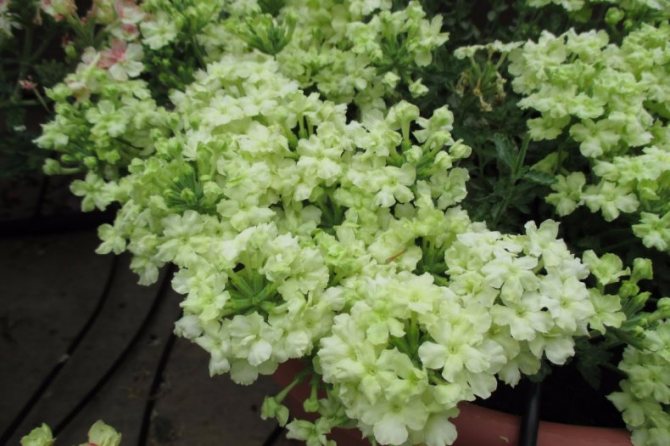

Most ampel varieties of verbena prefer timely, but not abundant watering, which is best done in the morning, at intervals of 1-2 days. With longer breaks, the plant quickly sheds flowers and seeds appear on it. At a young age, verbena needs more frequent watering, but with the arrival of autumn they are stopped altogether.
Complex mineral compositions with a high nitrogen content can be used as fertilizers for ampelous verbena.However, no less successful is the dosed feeding of plants with organic matter - a specially prepared infusion of compost and manure.
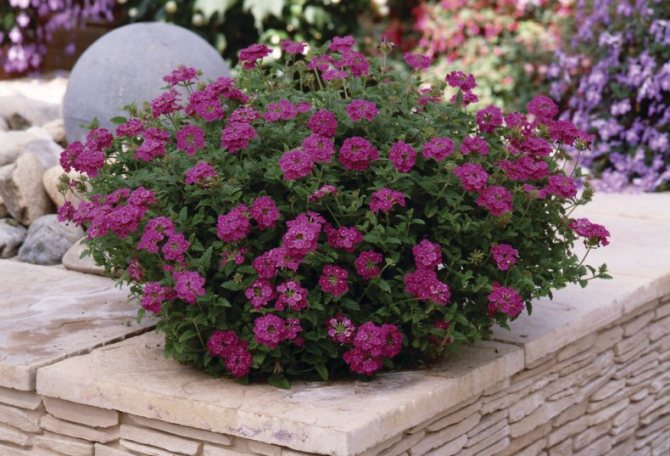

Nevertheless, you should not abuse such fertilizers, because, as in other cases, the rapid growth of greenery will negatively affect the formation of buds. For a beautiful and lush flowering of a plant, it is enough to fertilize the earth with organic solutions once a season and spill it three times with mineral mixtures.
Considering the relatively long length of the ampel verbena lashes, it is not surprising that from time to time they will need pruning, which can be both sanitary and formative. In the first case, remove all diseased and shriveled parts, as well as tissues affected by pests and diseases, which will help protect neighboring shoots from ailments. In addition, faded inflorescences are also subject to pruning so that they do not take away nutrients from other parts of the plant.
When the ampel verbena reaches a height of 7-8 cm, the top of all the seedlings is pinched, due to which intense tillering is formed. True, as for undersized varieties, they branch well even without performing this procedure.
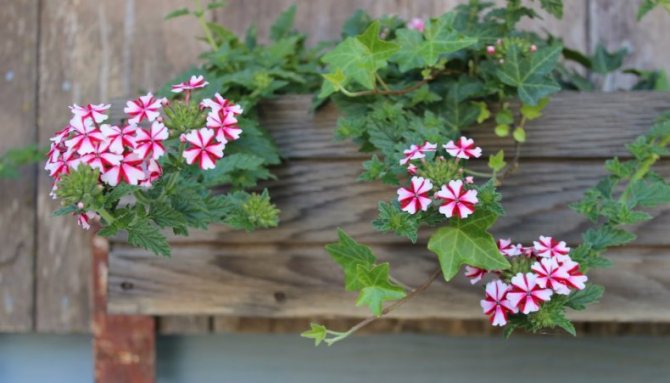

Diseases and pests
Verbena is one of those plants that, with proper care, almost never get sick. However, over-watering or humid and too hot summers can adversely affect this feature, causing powdery mildew to appear on the plant. You can get rid of it with sulfur, Fundazol or Saprol.
In some cases, ampelous verbena can annoy aphids and ticks, which can be eliminated using any of the insecticides on the market.
Excessive watering and lack of control of soil moisture sometimes leads to damage to the ampelous verbena with black leg, spotting or various types of rot, which often leads to the death of the entire plant. That is why one of the conditions for the successful cultivation of verbena is the observance of the rules of caring for it. This will help prevent possible troubles, because they can not always be easily eliminated.
Hybrid verbena
This is a group of varieties obtained by crossing. Many plants have improved qualities:
- disease resistance,
- earlier and longer flowering,
- tolerance to low temperatures,
- original color, etc.
The structure of the stems in hybrids is straight or creeping, bushes with a height of 15 to 50 cm, inflorescences, from 30 to 40 fragrant flowers collected in the shape of an umbrella. Long bloom - from the beginning of summer to the first frost. The most popular hybrid varieties:
- ground cover,
- ampelous,
- dwarf,
- tall.
With this variety of features, countless landscape compositions can be created. Choosing the best varieties of verbena to grow in your garden is easy.
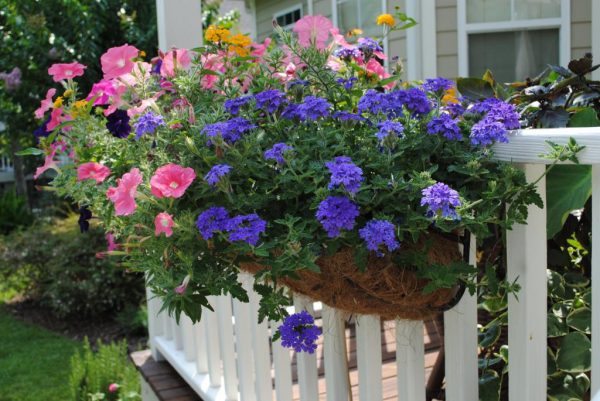

Application in landscape design
Ampel verbena looks equally good both in individual pots and in group plantings in a flower bed. A good option for placing it in the open ground would be planting in the form of a curb or next to shrubs, at their base (the plant looks especially good when paired with camellia or budley). Florists who planted ampel verbena in rabatki or mixborders do not go wrong with placement, since its greatest decorative effect is achieved precisely during mass plantings on the site.
On flower beds, ampelous varieties are perfectly combined with decorative cereals, asters, lobelias and marigolds. When used in pots, verbena is suitable for decorating gazebos and other outdoor structures.
Simply put, such an undemanding plant can be successfully used for almost any design endeavor, and all that is needed is to make very little effort to grow it.
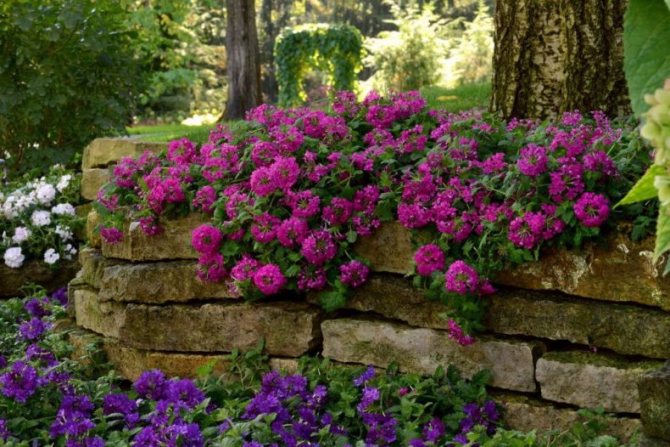

Planting and growing ampel verbena from seeds
Verbena ampelous is a flower of the vervain family.In general, this plant is perennial, but, not withstanding the cold climate, it dies, therefore everyone considers it an annual flower. Despite the fact that ampelous verbena was bred relatively recently, there are a lot of varieties of it. In the days of the Celtic tribes, a love drink was made from the verbena root, which helped in matters of the heart. In our time, this flower is used as a ground cover, grown in balcony boxes. Due to its hanging stems, ampel verbena is grown in hanging flowerpots and pots.
The leaves are mostly simple, dense with hairs in verbena. The flowers of the ampelous verbena are smaller than those of other varieties, no more than two centimeters. Due to their abundant flowering, they form a very lush "cap" and attract butterflies. The color palette in the color of flowers is very diverse.
For growing at home florists recommend the ampelous Imagineishen verbena. This variety is distinguished by its fast growth and beautiful lavender flowers.
To decorate the landscape, you can use the following varieties:
- Verbena bonariensis-height reaches two meters, the leaves are elongated, flowers are amethyst shade.
- Verbena hastata is a very hardy, drought tolerant species with purple flowers.
- Verbena lasiostachys-hairy stem reaches one meter and is decorated with an inflorescence of three to five leaves.
Growing can be started from seed or by cuttings.
For the first planting of a flower, gardeners recommend using the seed... You can buy them in specialized stores or collect them yourself.
Growing seedlings
After the buds have faded, the seeds are harvested and stored in a dry place until spring. Due to the fact that the sprouts of ampelous verbena are in great need of light, the seeds should be planted in March-April, after warming them up.
The surface for the seeds must be loosened and moistened. Then sprinkle the seeds and cover the entire sown area with polyethylene or glass, thus creating a greenhouse effect. It is not necessary to cover the seed from above with earth. The container is placed in a warm, well-lit place and the soil is watered as needed. In no case should a sharp drop in humidity be allowed, otherwise the “black leg” disease may appear and destroy all the seeds. Usually after about a week, the first shoots appear, after which all excess must be removed from the soil.
When the plants grow to seven eight centimeters, it is worth pinching the tops of them. After two weeks after picking young verbena sprouts, you should feed them with fertilizers.
Landing in the ground
Ampel verbena can be grown both on the windowsill and in the open field. Since it is a heat-loving flower and does not tolerate frost, then it should be planted in the ground in stable warm weather. Usually this time falls on the end of May and beginning of June.
Read also: How to properly plant and care for lupines?
The place for growing verbena needs to be chosen sunny or partial shade. When planting, the distance between plants depends on the size of the bushes, about 25-30 centimeters. If the soil turns out to be dry when planting, then pour 1-2 glasses of water into each dug hole. In the first days after planting, try to water the bushes sparingly, as this plant does not like waterlogged soil.
Recommended for 1 square meter plant about 40 plants, for greater splendor 50 pieces. 2-3 plants are planted in a flowerpot of up to five liters, and if the capacity is up to 12 liters, then 5-6 seedlings.
Propagation by cuttings
There are varieties of ampelous verbena that do not produce seeds. Such species are propagated by cuttings. This is mainly done in winter. The plant to be grafted is kept in a room with an air temperature not exceeding + 10 ° C. At the end of February, beginning of March, they begin grafting... This is done like this:
- Cut off the top of the shoot with four or six pairs of leaves, leaving a stem about 1 centimeter under the lower node. Then remove all the leaves, leaving only the upper ones.
- Cut the cut with crushed coal.
- Prepare the soil for rooting. It can be perlite, sand, or a mixture of sand and peat.
- Then make a small indentation in the prepared soil with a match.
- Immerse the cuttings into the recess to their lower node.
- Cover the container with polyethylene or glass for less evaporation.
Water in moderation, avoiding waterlogging or drying out of the soil. Periodically open the plastic / glass for ventilation. After 3-4 weeks, the verbena cuttings will develop roots. In open ground, the plant should be planted in May, when the earth is already warmed up.
Ampel verbena in care is not picky... With proper care, this flower will delight you all summer long. The main thing is to monitor soil moisture, loosen it, weed weeds. If the soil is very moist, new shoots will begin to appear in large quantities, which will lead to a decrease in flowering. And also when waterlogged on the plant, "powdery mildew" may appear. You can get rid of it with the help of solutions sold in specialized stores.
Throughout the summer, the plant should be fertilized complex fertilizers, but do not overdo it. Due to the excessive amount of nitrogen, the flower may stop blooming.
When ampelous vervain grows in pots, it is recommended to add moss or coconut fiber to the soil. These materials will absorb and retain moisture, gradually giving it back to the plant.
Verbena bloom begins in early June and lasts until the very frost. To increase the splendor of flowering, it is necessary to cut off faded inflorescences. And in order for the plant to bloom longer, you need to prune it by 1/3 after the first phase of flowering.
Despite the fact that verbena is a favorite treat of butterflies and caterpillars, it practically not affected by pests... The only enemy of this plant is aphids or mites. To get rid of aphids, mites, you need to dissolve the grated laundry soap in water and wipe the verbena leaves with this solution.
If the flower grows in the open field, to protect it from frost, its lashes must be cut to ground level and covered with brushwood. Thanks to this, next year you will not have to plant again. The root will sprout, and you can immediately move on to caring for the plant.
How to preserve ampel verbena in winter
Ampel verbena is a perennial plant, but in most regions of Russia it can only winter at home. There are exceptions to this rule:
- In the southern regions, verbena can be left in the soil - short-term frosts down to -2 ° C are not dangerous for it. If you are not sure, it is better to transfer to the house.
- Straight verbena variety is characterized by moderate winter hardiness, so the plant can spend a cold period in the soil. However, it must be cut off and covered with spruce branches.
Before the onset of the first frost, the verbena is cut so that the length of the remaining shoots does not exceed 10 cm. When digging up, you need to try to have as much soil as possible on the roots. The plant is placed in pots or other containers and stored at a temperature of 10-12 ° C (indoors, on insulated balconies or loggias).
What is this plant?
Verbena ampelous - an annual herbaceous flower of the Verbenov family... His homeland is the Mediterranean countries, Europe, North and South America. Natural varieties are also found in the Far East and Central Asia. There are about 250 varieties. The ampelous verbena variety was bred in the second half of the 20th century.
The ampelous verbena has no state of rest. The flowering period usually occurs at the end of May. Abundant flowering lasts until early October. The stems branch, hang down by 50 - 60 cm. The width of the crown of an adult flower is 50 cm. The leaves are simple, dense in structure, covered with hairs, openwork.
The flowers have 5 petals, the flowers are small, the sepals are 1 - 1, 5 cm in diameter.The color range is varied - hybrid varieties have lavender, blue, purple, all shades of red, pink, lilac colors. Learn about hybrid vervain here.
Inflorescences are large, voluminous, collect up to 30 - 35 flowers. This variety is usually planted in hanging baskets and pots. Verbena ampelous grows rapidly, so an annual transplant is required... The root is compact. The fruit has the shape of a small hazelnut of light brown or greenish marsh color. When ripe, the fruit splits into 4 parts.
Look at the photo of the ampel verbena:
Description and photos of varieties
Ampel verbena is an ornamental plant, which is a relatively recent result of selection, but already numbering about 250 varieties. The most popular of them should be attributed.
Image
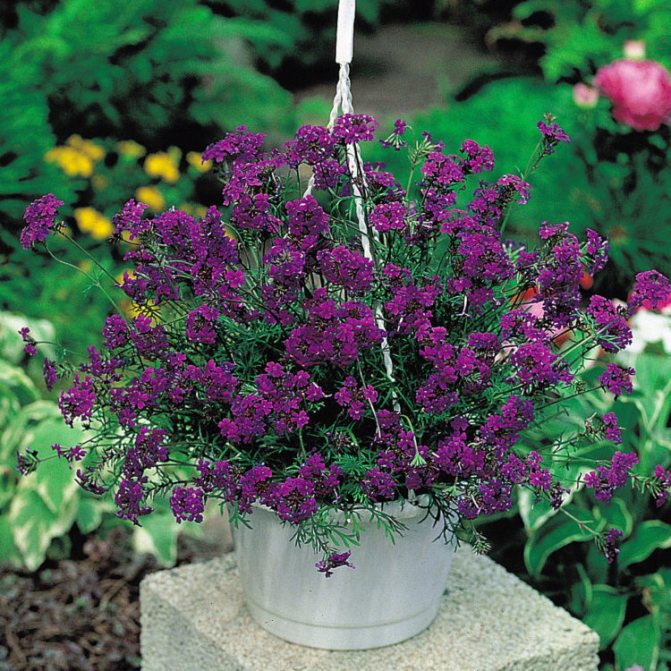

A variety of ampelous verbena, the creeping shoots of which reach 50 cm in length... Violet-lilac inflorescences are similar in shape to a ball. This variety is characterized by rapid vegetative growth, therefore it is often used not only for vertical gardening, but also as a ground cover crop.
The variety is characterized by increased resistance to adverse weather conditions. Awarded with the Fleurselect quality mark.
Tiara Red Impr (Red Imperial Crown)
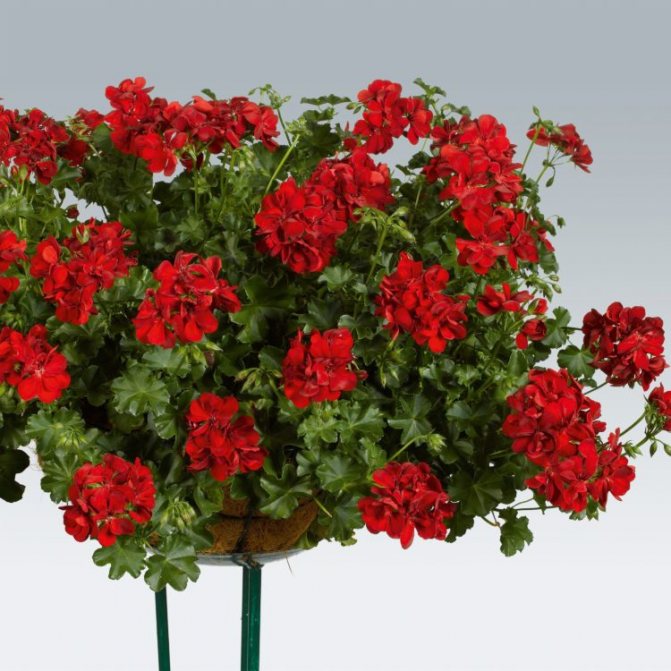

Ampel plant attracts attention with its brightness and richness of color... Scarlet lush inflorescences look spectacular against the background of gray-green carved foliage. Flowering is long and abundant. It is unpretentious in care, has increased resistance to frost (up to -3C) and drought.
Lenai Candy Kay
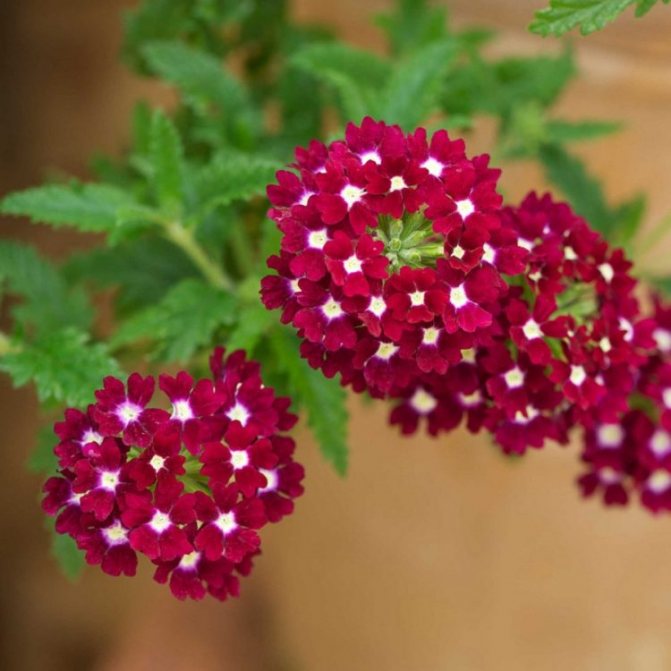

Verbena ampelous series, stem length - 45 cm. Flowers are large, multicolored: on a white background, a red-crimson core in the shape of a star. It has a delicate berry aroma.
Moon River
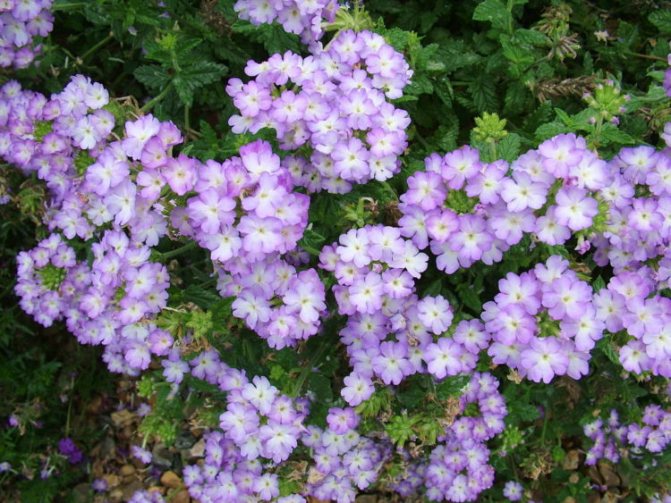

Ampel variety of verbena, the length of the shoots is 45 cm. The color of the inflorescences is lavender. Actively used for decorative purposes.
Peach and Cream


Ampel plant characterized by a combination of apricot, cream, yellow and orange flowers in one inflorescence.
This variety was awarded the Fleurselect gold medal in 1992.
We offer you to watch a video about the Peach & Cream verbena variety:
Mammut
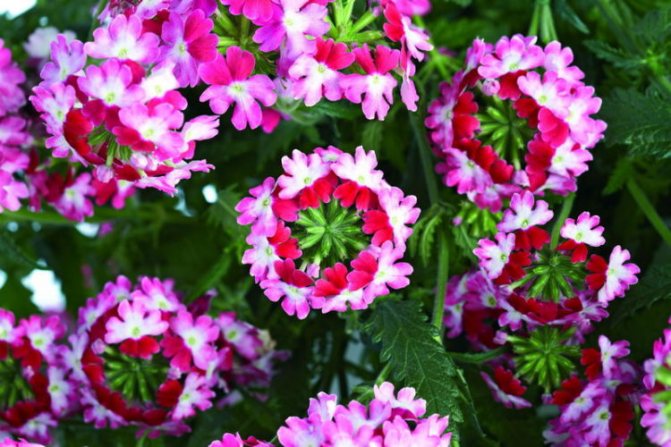

One of the oldest varieties. Its distinctive feature: elongated inflorescences are located on half-meter shoots.
Tropic
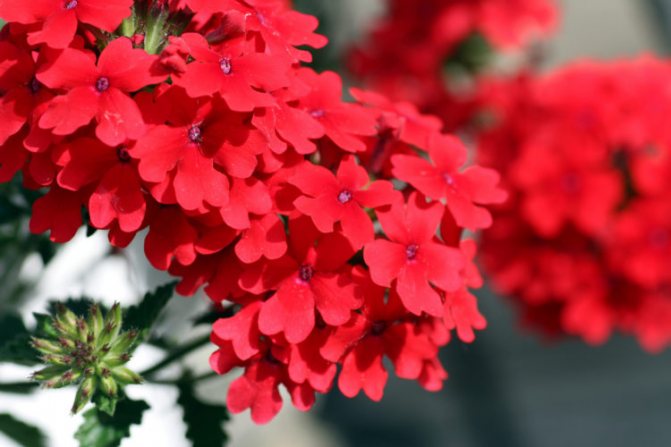

Ampel verbena is bright red in color.
Temari
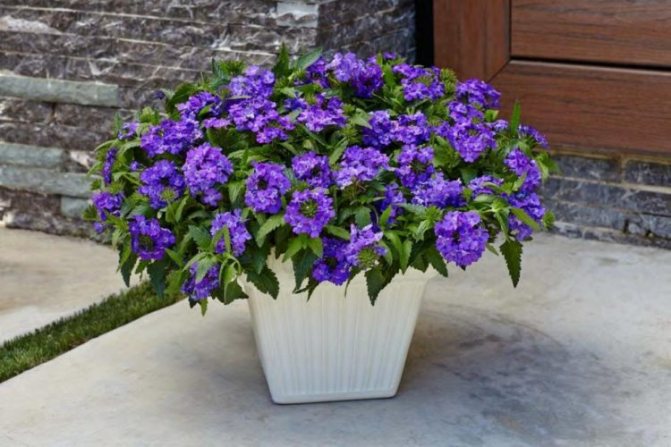

Hanging branched shoots of the ampelous type bear lilac-violet, purple inflorescences.
The variety is resistant to fungal infections.
Tapien
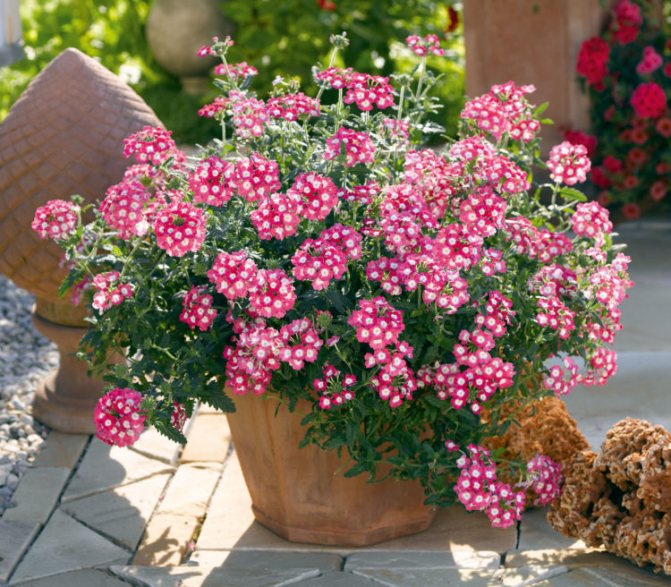

The plant is characterized by creeping branched shoots, long and intense flowering, unpretentiousness, sufficient resistance to adverse environmental factors.
The Snow Queen
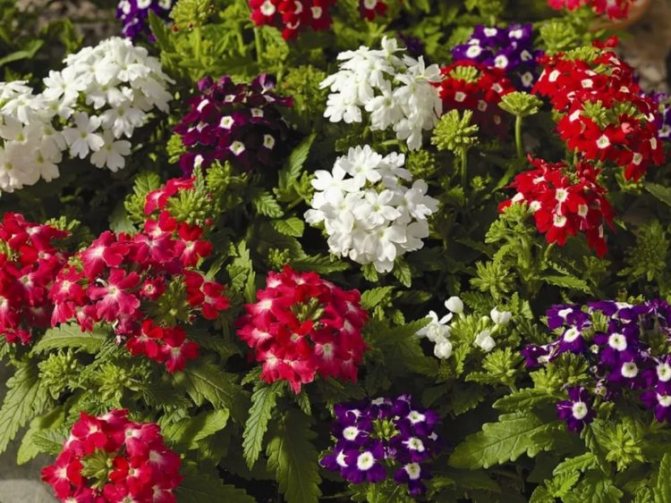

A mixture of ampelous verbena, numbering up to five colors of inflorescences.
Popular varieties with red and scarlet flowering
Most often, red ampel verbena is grown as an annual plant. Florists breed these varieties by sowing seeds. Young seedlings are placed in hanging pots. Some varieties of red ampelous verbena are considered to be especially popular.
"Tiara Red Impr"
Verbena with bright scarlet flowers, blooms profusely, forming a dense crown of numerous inflorescences. The variety is unpretentious, requires general rules for caring for hybrid varieties of ampelous verbena.
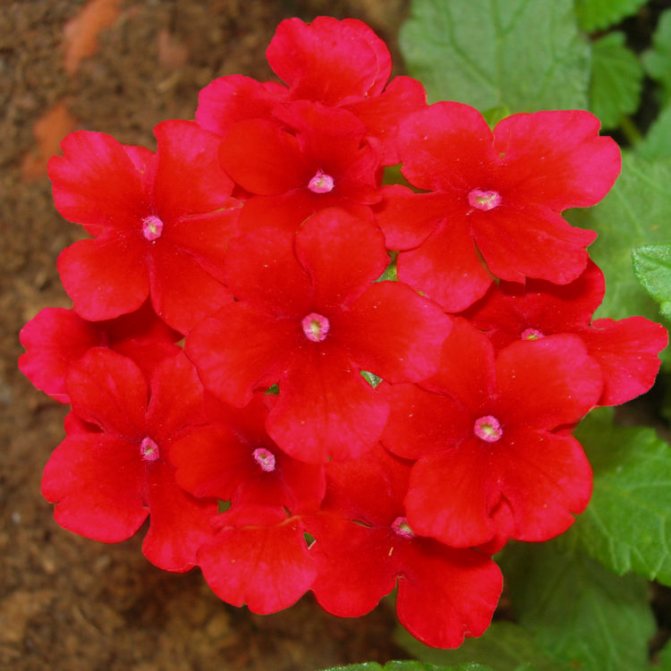

Estrella Voodoo Star
The flowers differ in color - a mix of white and bright red tones, the flowers are large - up to 3 - 4 cm. The flower itself is miniature, the height of the adult stem is 25 - 30 cm. The flowering is generous, long-lasting. The tops of the shoots are directed upwards. Flowering begins in early summer, and continues with proper care until the first autumn frosts.
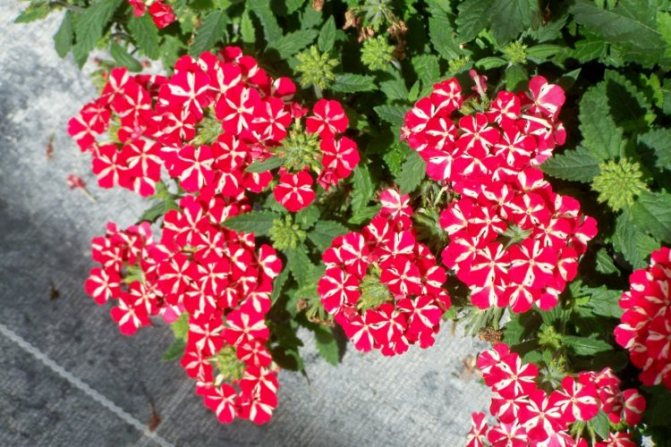

Varvain varieties and types
In total, more than 250 different varieties and hybrids of verbena were known for 2020. However, the most popular among flower growers are not so many varieties of this plant.
Hybrid verbena is classified into the following groups:
1. Plants with large inflorescences (Etna, Defias, Julia and some other flowers);
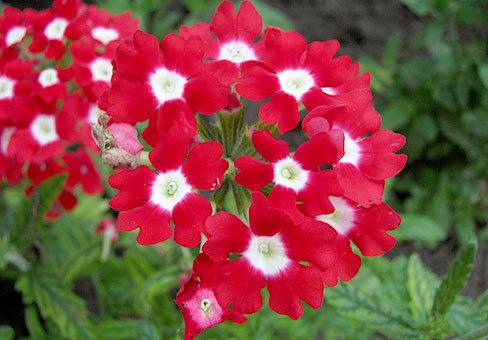

"Defiance"
2. Compact flowers (Pink Delight, Crystal, Amethyst, etc.).
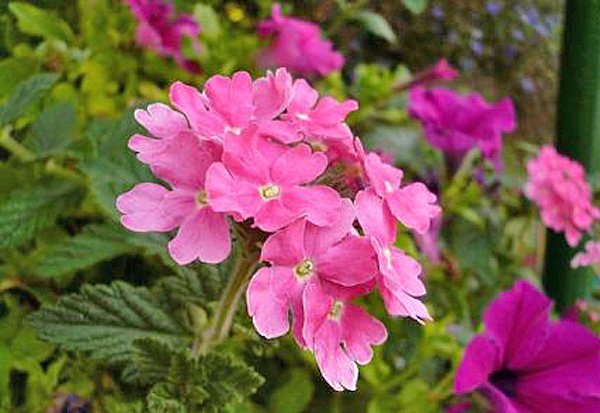

"Pink Delight"
The main types of verbena grown in garden plots:
- Canadian verbena is grown in Russia as an annual plant. The stems are not thick, they grow to a height of no more than 19 - 20 cm. The main colors of this plant are: white, pink, lilac.
- Hard verbena - its flowers are collected in lilac inflorescences. The foliage is slightly elongated, fleecy. Stems are tetrahedral in shape, spread along the ground. Ripe seeds do not lose their germination for 4 - 5 years.
- Buenos Aires verbena - the bushes of this variety are tall (up to 1.2 m in height). Stems are strong, straight. Lateral stems extend only from the base of the plant. Inflorescences appear on the bushes at the same time, the color of small flowers is amethyst.
- Verbena ampelous - this variety is best suited for vertical gardening. The bushes, planted in hanging pots, hang beautifully to the floor. The length of the stems ranges from 50 to 60 cm. The inflorescences are small, the flowers are small in various shades.
The main varieties of verbena:
- F1 Obsession is a whole series of different varieties that combine compactness of bushes and active growth of side shoots. The colors of the inflorescences are varied - from beige and peach tones to pink, there are also two-color flowers;
- Amethyst - low bushes of this variety are distinguished by beautiful inflorescence colors (the bright blue shade of flowers is mesmerizing), the first buds appear in early July;
- PinkParfait is a low variety of verbena (up to 25 - 30 cm), creeping shoots, therefore this variety is used for vertical gardening, flowers can be either creamy with a white tint or red;
- Defiance - grows up to 25 - 30 cm in height, inflorescences are dense, the main color is red, inflorescences can fade in direct sunlight;
- Schneekenigin - high bushes (up to 50 - 55 cm in height), inflorescences look like umbrellas, the number of flowers in an inflorescence - up to 60 pcs., Color - white;
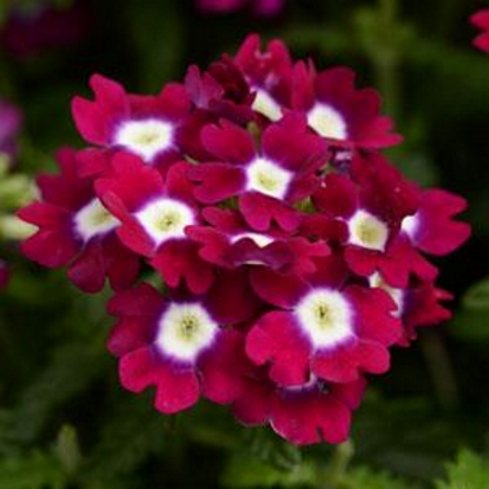

"Quartz Burgundy"
- QuartzBurgundy is a low variety (about 25 cm in height), inflorescences of medium size, up to 7 cm in diameter, the color of the flowers is bright crimson. Propagated by cuttings;
- Etna - beautiful bushes up to 40 - 45 cm high, inflorescences are of medium size (up to 7 cm in diameter), similar to small umbrellas, with about 50 flowers;
- SilverAnne - flowers of this variety are collected in dense inflorescences, their colors are bright pink, with a pleasant aroma, by the end of summer the color turns slightly pale, reproduce exclusively by cuttings.
Features of the view
- Verbena ampelous has healing properties. Its flowers are used to treat abscesses, scrofula, and to activate brain activity. The flower is widely used in cosmetology; verbena extract is included in creams and face masks. Read about the beneficial properties and contraindications to the use of verbena herb here.
- In design it is used as a decorative home flower. It is appreciated by flower growers for its colorful flowering and beautiful, curly green leaves.
- The variety is distinguished by its unpretentiousness, long bright flowering. Serves as an excellent honey plant, and is also a nutritious material for butterflies and caterpillars.
Read also: How to plant aconite in a summer cottage? Care rules
Conditions of detention
Verbena ampelous loves light, grows poorly in the shade, flowering slows down. Can grow in the sun, on the south side of the house.
Air, temperature
Verbena ampelous is grown every year as an annual, this variety does not tolerate big frosts. It tolerates small frosts down to -3 - 4 ° С. Verbena ampelous is very thermophilic, the damp, cold climate is poorly tolerated by the flower, it begins to hurt.
The optimum temperature for the growth and development of ampelous verbena is 18 - 22 ° C.


The substrate for this variety should be moderately moist, loose and not contain large doses of mineral salts. The soil should not contain a large amount of nitrogen, which promotes the growth of shoots - stems and will inhibit the development of buds. The substrate should be regularly moistened, the aridity of the soil provokes the appearance of flower diseases.
Additional loosening of the substrate is required before the growth of the bush... Also, to preserve a moist substrate, it is advisable to mulch the soil surface with rotted leaves.
Soil composition for ampel verbena:
- The drainage layer is a mixture of broken brick, expanded clay, crushed stone.
- Garden land - 2 h.
- Sand - 1 tsp
Gardeners believe that for ampelous verbena, you can take fertile loam as the basis of the soil.
The presence of drainage and holes in the pot for outflow of water prevents the root from excessive wetting and rotting.
Verbena ampelous prefers regular but moderate watering. In summer, it is recommended to water in the morning every other day. Young seedlings are watered every day in small doses.
In the fall, watering should be reduced. Water the flower as needed when the topsoil dries up in pots.
Ampel verbena is fertilized every 2 weeks with complex mineral fertilizers.


The ampelous verbena variety requires more feeding than other types of vervain.
It is required to strictly observe the dosage of dressings, with excessive fertilization, a green mass develops, but the formation of buds is delayed. In early spring, to grow leaves, you should feed the flower with watering, with the addition of nitrogen fertilizers.
To form flower buds, in early May, fertilizers should be used:
Fertilizers for better assimilation and uniform distribution are usually combined with watering.
Care
It is not difficult to take care of the ampelous verbena, since it is a rather unpretentious plant. It needs periodic loosening of the soil until a bush is formed, regular watering, top dressing and pruning.
Watering
Ampelnaya
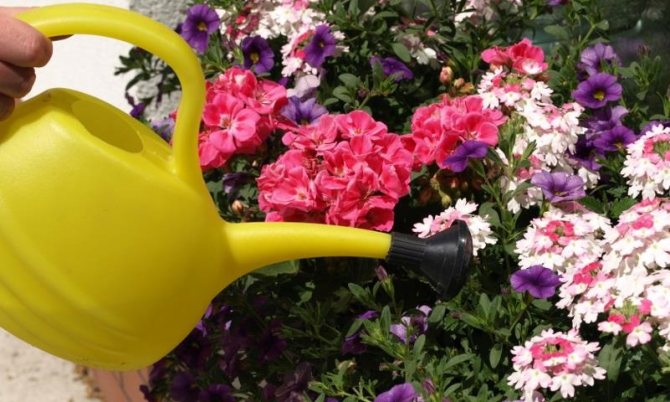

vervain is watered regularly, but in moderation. Waterlogging can lead to root rot. In the hot period, watering is carried out in the morning every 1-2 days.
Immediately after the pick, the seedlings are watered more often, and in the fall they stop moisturizing. Too scanty and rare watering leads to the fact that the bushes fade prematurely.
Planting and transplanting
For planting ampelous verbena, you can grow seedlings from seeds... For beginner flower growers, seedlings are bought in special stores.
Immediately after planting, the seedlings are watered abundantly for rooting. The flower will absorb the required amount of moisture. Surplus water usually flows out through the drain holes. Empty the water from the pallets immediately. Stagnant water is contraindicated for seedlings.
The transplant is usually done in May, when constant heat is established. They choose a sunny place on a balcony or loggia, boxes or hanging pots are placed there.
Verbena ampelous is also planted in open groundespecially in southern climates.
- Pre-dug up a piece of land.
- For soil fertility, humus is introduced - 3 - 4 kg per 1 sq. m and 3-4 st. l. any complex mineral fertilizers.
- Dig small holes, 2 - 3 cm larger than the size of the earthen clod of the seedling.
- Wells are well moistened before planting.
- A seedling is placed vertically, sprinkled with a substrate, lightly tamping it with a spatula.
In the garden or on a flower bed, up to 40 - 50 seedlings are planted per 1 sq. m. at a distance of 20 cm from each other. You will find all the details of planting and subsequent care for vervain in a separate material.
Growing and caring for verbena outdoors
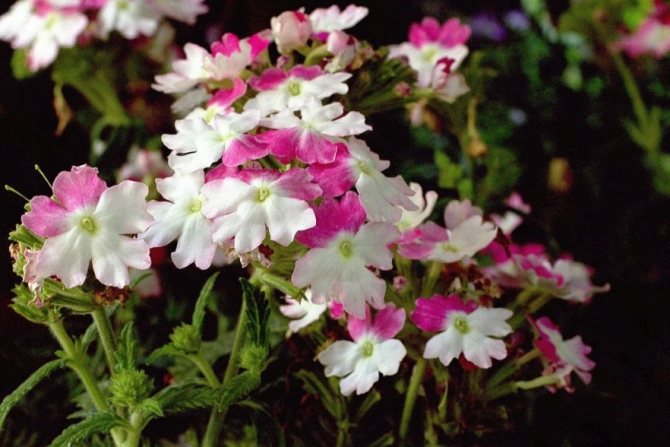

Verbena, planted in open ground, does not require special care. However, some conditions must still be met.
Water these flowers regularly from the moment the seedlings are planted in open ground until the end of the flowering of the verbena. After the plant has completely bloomed, the number of waterings can be reduced.These flowers, unlike vegetable plants, should not be loosened after watering. A similar procedure can be done if the summer is hot and dry - to improve the supply of oxygen to the root system. To reduce moisture evaporation from the surface of the soil, you can sprinkle sawdust or other mulching material under the plants.
Weed control in flower beds where verbena grows is usually carried out only at first, until the bushes have grown. And when this plant gains strength, then the shoots of this plant fill the entire space in the flowerbed, and there is no room for the weeds to grow.
When applying fertilizers for these plants, remember: do not overuse organic fertilizers (rotted manure or compost). These fertilizers contain a large amount of nitrogen, which stimulates the growth of vegetative mass to the detriment of the formation of inflorescences. Usually organic fertilizers are applied to these plants in the spring to stimulate shoot growth. In the future, only complex mineral fertilizers are used for feeding verbena.
Sowing seeds
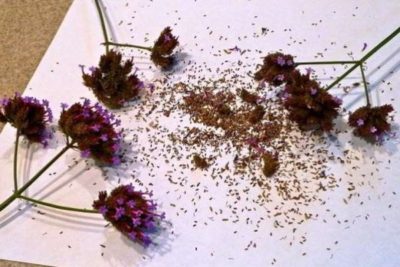

Ampel verbena reproduces well by seeds. The seed sowing procedure is long and laborious, carried out in mid-March:
- A drainage layer is placed in small seedling boxes.
- A special substrate is poured, preheated, in a small layer.
- The substrate is moistened with a small amount of water in a fine watering can.
- Seeds are sown freely, do not go deep, they should be sprinkled with humus or substrate.
- The top of the box is covered with a transparent thick film or glass.
- Germination boxes are placed in a warmer place - the air temperature for seed germination must be at least 18 ° C.
- It is obligatory to air the greenhouse daily 2 - 3 times a day; collected condensate is removed.
- After 3 - 4 weeks when the seeds germinate, the boxes must be rearranged in a bright, cool place.
- When 2 - 3 leaves appear, the seedlings are dived into special cups, or immediately planted in pots.
- Fertilizers for the growth of seedlings are applied 10-14 days after planting in a pot.
You can read more about growing verbena from seeds or cuttings in another article.
Treatment methods
At home, you can independently prepare several preparations that have all the positive qualities of vervain.
Tea
The drink relieves fatigue, irritation, insomnia, migraine. Recommended remedy for colds, flu, bronchitis, gastrointestinal diseases with low acidity.
Preparation:
- Measure 2 tsp. mixture of herbs and flowers of verbena, knead.
- Pour raw materials with 200 ml of boiling water.
- Insist 5-10 minutes.


They drink a drink warm once a day in courses for 2 weeks. If you start taking it 5-7 days before the expected menstruation, the soreness is significantly reduced, spasms are relieved, and the mood is leveled. The use of long courses of 30 days with a break for a week, eliminates the manifestations of menopause.
Tincture
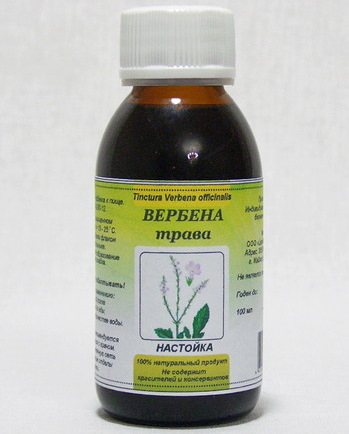

Alcohol extract of verbena is considered an excellent diaphoretic, immunostimulating, blood-purifying, antitumor, tonic.
Preparation:
- Dry verbena (50 g) is placed in a glass vessel.
- Raw materials are poured with 500 ml of high-quality alcohol (40%).
- Insist 3 weeks in a place without access to sunlight.
- The finished composition is filtered off.
Take 1 tsp of verbena tincture. before every meal.
To cleanse blood vessels, prevent and treat atherosclerosis or migraines, courses are carried out for at least 15 days, repeating after a 7-day break.
Decoction
It is used mainly as an external agent for any dermatological diseases. Internal use is indicated for infections of the oral cavity and respiratory tract.
Preparation:
- A tablespoon of dry herb is poured with cold water (250 ml).
- The composition is heated in a water bath for at least 45 minutes.
- Leave to brew for another 15 minutes, filter.
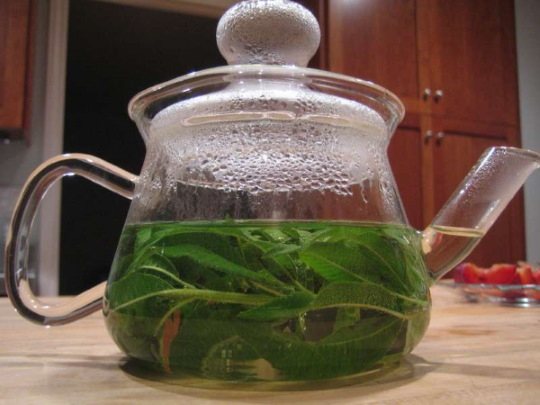

The broth is used externally 3 times a day for washes, lotions, rinses. Inside take 1/4 cup 3-4 times a day. It is possible to use a decoction for liver and kidney diseases, when strong essential components and alcohol are not acceptable.
For infected wounds, boils, fistulas, trophic ulcers, dried verbena can be used as a compress. For this, 4 tbsp. l. raw materials are wrapped in several layers of gauze, dipped in boiling water for 3 minutes. The compress is cooled slightly and applied to the affected area for 20 minutes up to 4 times a day.
Essential oil
Ready-made pharmacy extract from lemon verbena is used in aromatherapy (2-3 drops per session), prescribed for loss of strength, scanty menstruation, anemia, any respiratory diseases, headache, hypotension.
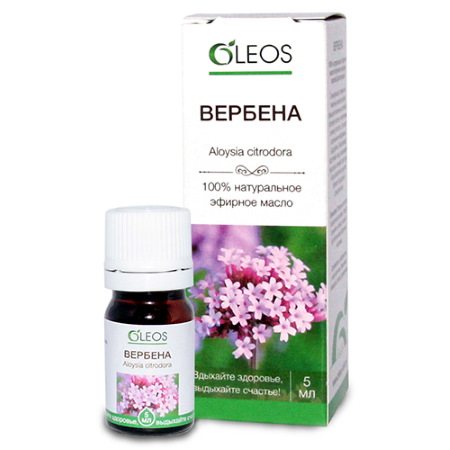

Massage with essential oil diluted in cream or neutral vegetable fat 1:20 helps with rheumatic pains, pneumonia, acute respiratory infections, restores muscle performance.
Baths with the addition of 5–7 drops of verbena oil relax, treat anxiety, insomnia, disinfect the respiratory tract, skin, and increase the body's resistance.
There is only one recipe for the internal use of verbena essential oil. It is believed that 1 drop of the extract, diluted in a glass of any fruit juice, can enhance skin pigmentation when exposed to the sun, makes the tan even, and prevents burning.
Reproduction
Ampel verbena is propagated by cuttings. Usually this method is used for hybrids that do not produce seeds. The verbena flower is brought into a cool room for the winter.... The air temperature should be 5 - 10 ° С. Cuttings of ampelous verbena are carried out in February - early March.
Soil composition for cuttings - seedlings:
Algorithm:


The finished substrate is heated and poured into containers or boxes.- Cut the cuttings of the upper shoots.
- Each cutting should have at least 4 leaves.
- The lower leaves are cut from the cutting.
- The cuttings are pre-soaked in the root for a day for better rooting.
- Planting stems are planted, deepening them by 1 cm.
- For a greenhouse effect, the seedlings are covered with foil or glass.
- Regular airing and watering is required.
- After a month, roots are formed.
Next, you can watch a video about the reproduction of ampelous verbena:
Landing algorithm
The optimal time for sowing verbena for seedlings is the end of February or the beginning of March. For seedlings, you can use a large box with subsequent picking of seedlings.
Planting procedure:
- A drainage layer is laid at the bottom of the planting container.
- Fill the container with a peat mixture with sand or a ready-made substrate for flowering plants.
- Prepared seeds are immersed in the soil no deeper than 1–2 cm and watered.
- Create a mini greenhouse by covering the box with polyethylene;
- Store in a cool place until friendly shoots are obtained.
Plants dive in the phase of 4 leaves. After transplanting, the temperature is lowered by several degrees to activate the roots. If the planting was done sparsely or in separate pots, leave the vervain to grow in the same container.

